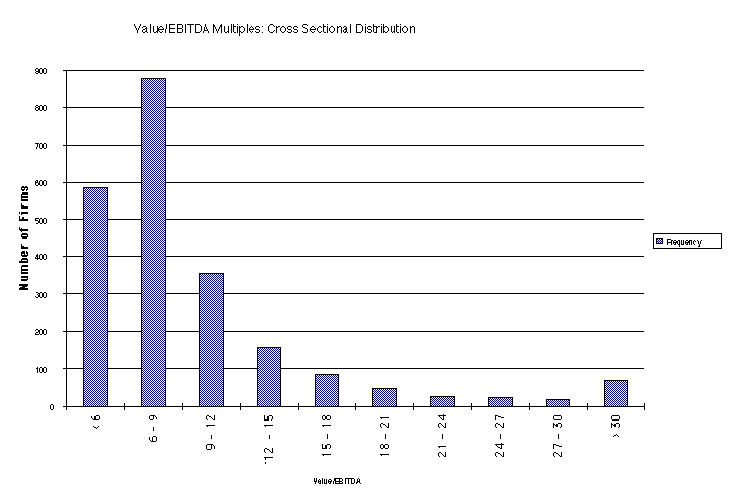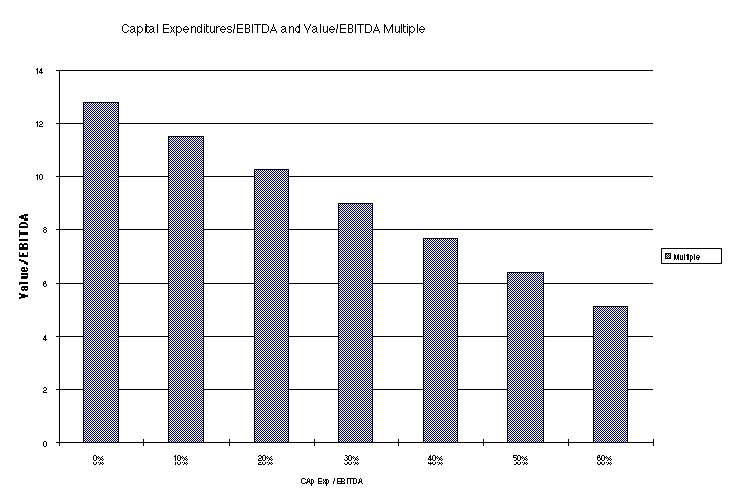
VALUE/EBITDA MULTIPLE
What is it?

Value: Market Value of Equity + Market Value of Debt + Market
Value of Other Securities
EBITDA: Earnings before interest, taxes and depreciation
The No-Cash Version

Value: Market Value of All Securities - Cash & Marketable Securities
EBITDA: Earnings before interest,taxes and depreciation - Interest
Income from Cash & Marketable Securities
Reasons for Increased Use
1. The multiple can be computed even for firms that are reporting net losses, since earnings before interest, taxes and depreciation are usually
positive.
2. For firms in certain industries, such as cable, which require a substantial investment in infrastructure and long gestation periods, this multiple seems to be more appropriate
than the price/earnings ratio.
3. In leveraged buyouts, where the key factor is cash generated by the firm prior to
all discretionary expenditures, the EBITDA is the measure of cash
flows from operations that can be used to support debt payment
at least in the short term.
4. By looking at cashflows prior to capital expenditures, it may
provide a better estimate of ìoptimal valueî, especially if the
capital expenditures are unwise or earn substandard returns.
5. By looking at the value of the firm (inclusive of debt) and
cashflows to the firm (prior to debt payments) it allows for comparisons
across firms with different financial leverage.

The Determinants of Value/EBITDA Multiples: Linkage to DCF Valuation
The value of a stable growth firm can be written as follows:

The numerator can be written as follows:
FCFF = EBIT (1-t) - (Cex - Depr) - D Working Capital
= (EBITDA - Depr) (1-t) - (Cex - Depr) - D Working Capital
= EBITDA (1-t) + Depr (t) - Cex - D Working Capital
From Firm Value to EBITDA Multiples
Now the Value of the firm can be rewritten as,

Dividing both sides of the equation by EBITDA,

Determinants of Value/EBITDA Multiples
|
Determinant |
Effect on Value/EBITDA mulitple |
Implications |
| 1. Tax Rate | As tax rate increases, multiple decreases. |
|
| 2. Cost of Capital | As cost of capital increases, multiple will decrease. |
|
| 3. Depreciation/EBITDA | As depreciation increases as a proportion of EBITDA, Value/EBITDA multiples will increase. |
|
| 4. Growth and Capital Expenditures/EBITDA | For a given growth rate, firms with higher capital expenditures will sell for lower Value/EBITDA multiples. |
|
Expected Growth, Capital Expenditures and Value/EBITDA Multiples
For a given growth rate, firms with higher capital expenditures
will have lower Value/EBITDA multiples
